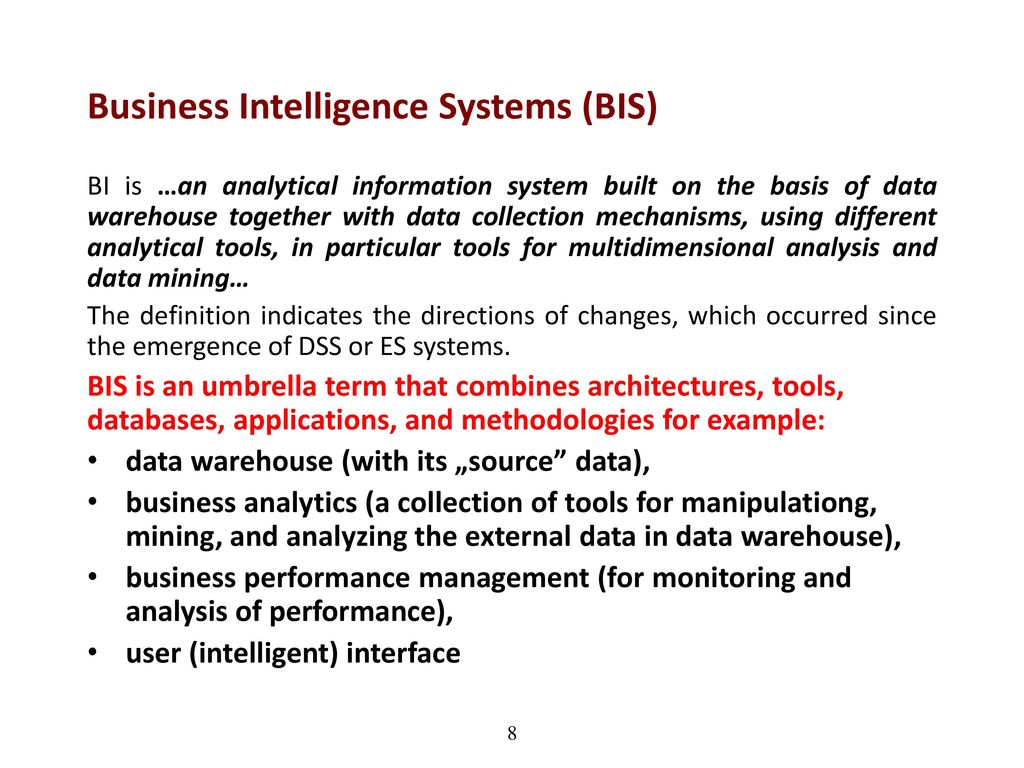Safety Car Accidents: Understanding the Risks and Responsibilities
In the high-stakes world of motorsports, safety cars play a crucial role in ensuring the well-being of drivers and spectators alike. These specialized vehicles, often brightly colored and equipped with flashing lights, are deployed during races to neutralize the competition in the event of an incident or adverse conditions. However, despite their life-saving purpose, safety cars themselves are not immune to accidents, as evidenced by the recent incident at the iconic Le Mans 24 Hours race.
What is a Safety Car Accident?
A safety car accident is a collision involving a safety car and another vehicle, driver, or object. These incidents can occur for various reasons, including human error, mechanical failures, or track conditions. The consequences of a safety car accident can be severe, ranging from minor damage to catastrophic injuries or even fatalities.
To paint a more vivid picture, imagine a race where a safety car is deployed due to a crash involving two race cars. As the safety car slows the field, a following driver loses control and rear-ends the safety car. The impact propels the safety car into the path of an oncoming race car, resulting in a three-car pileup. Such incidents highlight the inherent risks associated with safety car deployment and underscore the importance of adherence to safety protocols.
Causes of Safety Car Accidents
Identifying the causes of safety car accidents is paramount to developing preventive measures. Human factors, such as driver error and miscommunication, play a significant role. Safety car drivers must possess exceptional skills and remain vigilant, while race drivers must respect the authority of the safety car and follow its instructions meticulously.
Mechanical failures, though less common, can also contribute to safety car accidents. Regular maintenance and rigorous safety inspections are essential to minimize the likelihood of equipment malfunction. Furthermore, unfavorable track conditions, such as rain or debris, can reduce visibility and traction, increasing the risk of accidents.
Responsibilities in Safety Car Accidents
Determining responsibility in safety car accidents requires a thorough investigation. In general, the driver at fault for causing the collision will be held liable for any damages or injuries sustained. However, in cases involving multiple vehicles or contributing factors, liability may be shared among several parties.
Race organizers have a responsibility to ensure the safety of all participants and spectators. This includes providing adequate training for safety car drivers, maintaining track conditions, and enforcing race regulations. Drivers, in turn, are obligated to follow the instructions of the safety car and exercise due care while racing.
Conclusion
Safety car accidents are a sobering reminder of the risks inherent in motorsports. By understanding the causes and responsibilities associated with these incidents, we can work collectively to enhance safety measures and prevent future tragedies. The well-being of drivers, spectators, and safety personnel alike depends on our unwavering commitment to safety and adherence to established protocols.
Safety Car Crashes: A Peril on the Road
Imagine being in a high-speed car race when suddenly, the safety car deployed to neutralize the race crashes, causing a chaotic pileup. Such was the heart-stopping scene in the 2021 Formula 1 Belgian Grand Prix, where a safety car accident cast a dark shadow over what was supposed to be a thrilling event. While such incidents are rare, they underscore the inherent risks associated with safety cars, vehicles designed to keep drivers safe but can, ironically, become hazards themselves.
Causes of Safety Car Accidents
Mechanical Failures
Safety cars are complex machines, and like any other vehicle, they are vulnerable to mechanical failures. Malfunctions in the braking system, steering, or tires can compromise the car’s stability, leading to loss of control and potential accidents. Regular inspections and maintenance are crucial to minimize the risk of these failures, but even the most well-maintained cars can experience unexpected breakdowns.
Driver Error
Human error is a significant contributing factor to safety car accidents. The drivers of these specialized vehicles must possess exceptional skills and冷静 under pressure. Mistakes in judgment, such as mistimed braking or erratic maneuvering, can lead to dangerous situations. Insufficient training or inexperience can further heighten the risk. Ensuring that safety car drivers undergo rigorous training programs and receive ongoing assessments is paramount to mitigate human-related accidents.
Track Conditions
The condition of the racetrack can also play a role in safety car accidents. Wet or slippery surfaces can reduce traction, making it harder for the safety car to maintain stability. Poor visibility due to rain, fog, or darkness can further impair the driver’s ability to navigate the track. Race organizers must prioritize track maintenance and ensure that conditions are suitable for safe racing. If weather conditions deteriorate or track damage occurs, the safety car may need to be deployed more frequently, increasing the chances of an incident.
Safety Precautions
While safety cars are essential for maintaining order and safety on the racetrack, their presence also introduces an element of risk. To minimize the likelihood of accidents, several precautions are taken. Race officials carefully monitor the safety car’s movements and communicate with drivers via radio to ensure they are aware of its position. Lap times are often adjusted to give the safety car sufficient time to clear the track, and drivers are instructed to maintain a safe distance behind it. Constant vigilance is key to preventing safety car accidents and ensuring that these vehicles, designed to protect, do not become sources of danger.
Safety Car Accidents: Understanding the Risks and Consequences
Safety, a word often associated with protection and well-being, takes on a different meaning when paired with “car accident.” These incidents, unfortunately all too common, bring with them a heightened sense of risk due to the high speeds and close proximity of vehicles involved.
Such accidents can have devastating consequences, leaving victims with severe injuries or, in the worst-case scenario, fatalities. It’s a sobering thought that even those participating in safety-related events can find themselves in harm’s way.
Remember the tragic incident at the Indianapolis 500 in 2022? As cars hurtled around the track at speeds exceeding 200 mph, a horrific crash involving multiple vehicles sent shockwaves throughout the racing community. This incident serves as a grim reminder of the inherent dangers associated with safety car racing.
Risks and Consequences
Safety car accidents pose unique risks due to the high speeds and close proximity of vehicles. The impact forces in such collisions can be enormous, resulting in severe injuries or even fatalities. Victims may sustain head trauma, spinal cord injuries, broken bones, and internal bleeding.
The close proximity of vehicles in safety car scenarios exacerbates the risks. Cars traveling side-by-side at high speeds have little margin for error, and even a minor touch can send vehicles careening out of control.
Moreover, the presence of safety equipment, while intended to protect drivers, can ironically contribute to the severity of injuries. Roll cages, designed to prevent rollovers, can trap drivers inside mangled wreckage, making it difficult for emergency responders to extricate them quickly.
Safety car accidents can also have long-term consequences. Survivors may face chronic pain, disability, and emotional trauma. Such injuries can hinder their ability to work, engage in social activities, and enjoy life to the fullest.
The financial burden of safety car accidents can be overwhelming. Medical expenses, lost wages, and property damage can quickly deplete savings and leave victims facing financial ruin.
Safety Car Accidents: Prevention and Aftermath
In the gripping world of motorsports, safety car accidents serve as a jarring reminder of the inherent risks involved. While the adrenaline rush and competitive spirit often dominate the narrative, incidents like the recent safety car collision during the Formula 1 race in Saudi Arabia underscore the urgent need for comprehensive preventive measures.
Prevention Measures
To minimize the risk of safety car accidents, organizers and drivers implement safety protocols, such as:
Strict Inspections: Vehicles must undergo rigorous inspections before taking to the track to ensure their mechanical integrity and compliance with safety regulations.
Driver Training: Drivers receive extensive training to familiarize themselves with safety procedures, emergency protocols, and the unpredictable nature of competitive racing.
Track Modifications: Circuits are meticulously designed with safety features such as run-off areas, gravel traps, and crash barriers to minimize the severity of potential accidents.
Communication and Visibility: Effective communication channels between the race control, marshals, and safety car drivers are crucial for coordinating emergency responses and ensuring clear visibility during incidents.
Consequences of Safety Car Accidents
When safety car accidents occur, the consequences can be far-reaching:
Physical Harm: Drivers involved in safety car accidents often sustain serious injuries due to the high speeds and intense forces involved.
Race Disruptions: Accidents involving the safety car can lead to disruptions in the race schedule, affecting the overall competition and fan experience.
Financial Implications: Investigating and repairing damaged cars, as well as covering medical expenses, can pose significant financial burdens for teams and organizers.
Aftermath and Lessons Learned
In the wake of safety car accidents, investigations are conducted to determine the causes and identify areas for improvement. Lessons learned from these incidents help guide future safety protocols and technological advancements.
Technology and Innovation: Advanced safety systems, such as anti-lock braking systems and energy-absorbing structures, are constantly being developed to mitigate the impact of accidents.
Ongoing Training and Education: Regular training and education programs for drivers and race officials ensure that they stay up-to-date with the latest safety procedures and best practices.
Continuous Evolution of Safety Regulations: Governing bodies continuously review and update safety regulations based on evolving technology and lessons learned from past accidents.
Safety in motorsports is a multifaceted endeavor that requires ongoing vigilance and collaboration. By implementing robust preventive measures, promoting responsible driving, and learning from past incidents, organizers and drivers can help ensure that the thrill of competition is not overshadowed by preventable accidents.
Safety Car Accidents: A Perilous Predicament
On a sun-kissed afternoon, a harrowing scene unfolded as a safety car, a beacon of order and protection, became entangled in a violent collision. The impact sent shockwaves through the surrounding vehicles, leaving a trail of twisted metal and shattered glass in its wake. In the aftermath of this chaotic event, the legal and insurance implications loom large, casting a shadow over the unfortunate victims.
Legal and Insurance Considerations
In the tangled web of a safety car accident, legal and insurance companies take center stage, their primary objective being to determine liability and assign fair compensation for damages incurred. Fault can rest upon various parties involved, including the driver of the safety car, other motorists, or even the responsible government agency. Insurance coverage, provided by respective policies, plays a crucial role in mitigating the financial burden of medical expenses, vehicle repairs, and other associated costs.
Fault and Liability
Assigning fault in a safety car accident is a multifaceted endeavor, often requiring meticulous investigation and legal expertise. Factors such as driver negligence, traffic violations, and road conditions are carefully scrutinized to establish culpability. Determining liability is paramount in ensuring that the responsible parties are held accountable for their actions, paving the way for appropriate legal recourse.
Insurance Coverage
Insurance policies serve as a safety net in the face of accidents, providing financial protection to policyholders. In the aftermath of a safety car accident, numerous types of insurance coverage may come into play, including auto insurance, personal injury protection (PIP), and uninsured/underinsured motorist coverage. Each policy component plays a specific role in covering expenses, offering a lifeline of financial assistance to those affected.
Steps After an Accident
In the immediate aftermath of a safety car accident, several crucial steps should be taken to protect your legal rights and ensure a fair outcome. These include seeking medical attention, promptly reporting the incident to authorities, and gathering as much evidence as possible. Additionally, it is advisable to contact your insurance company promptly to initiate the claims process and secure appropriate representation.
Safety Cars in Motorsport: Lessons from Notable Incidents
A safety car is a car that is used in motorsport to slow down the race in the event of an accident or other incident. Safety cars are typically driven by experienced racing drivers and are equipped with flashing lights and other safety features.
The use of safety cars has become increasingly common in recent years, as the speeds of racing cars have increased and the tracks have become more dangerous. Safety cars have been credited with saving lives and reducing injuries in motorsport.
Case Studies and Notable Incidents
There have been a number of notable safety car incidents in high-profile motorsports events. One of the most famous incidents occurred at the 1994 San Marino Grand Prix, when Ayrton Senna was killed in a crash. The safety car was deployed after another crash on the first lap of the race, but Senna was unable to avoid hitting the wall at Tamburello corner.
Another notable incident occurred at the 2014 Japanese Grand Prix, when Jules Bianchi crashed into a recovery vehicle. Bianchi was seriously injured in the crash and died nine months later. The incident led to calls for changes to the safety regulations in Formula One.
Safety Car Procedures
The procedures for deploying the safety car are determined by the race organizers. In most cases, the safety car is deployed when there is an accident on the track or when there is a dangerous situation, such as heavy rain or fog.
When the safety car is deployed, all of the cars on the track must slow down and follow behind the safety car. The safety car will lead the cars around the track until the incident is cleared. Once the incident is cleared, the safety car will return to the pits and the race will resume.
Safety Car Design and Equipment
Safety cars are typically designed and equipped to withstand the rigors of racing. They are fitted with roll cages, fire extinguishers, and other safety features. Safety cars are also equipped with flashing lights and sirens to warn other drivers of their presence on the track.
Safety cars are typically driven by experienced racing drivers who are familiar with the track and the safety procedures. The drivers of safety cars are responsible for ensuring the safety of the other drivers on the track.
Safety Car Performance
The performance of safety cars has improved significantly in recent years. Safety cars are now equipped with more powerful engines and brakes, and they are able to keep up with the speeds of racing cars. Safety cars are also equipped with electronic stability control and other safety features to help them stay on the track in slippery conditions.
The performance of safety cars is essential for the safety of the drivers on the track. Safety cars must be able to keep up with the speeds of racing cars in order to be able to intervene in an incident quickly and effectively.
Conclusion
Safety cars are an essential part of motorsport safety. They help to slow down the race in the event of an accident or other incident, and they provide a safe environment for the drivers to continue racing. The performance of safety cars has improved significantly in recent years, and they are now able to keep up with the speeds of racing cars and intervene in an incident quickly and effectively.




Leave a Reply